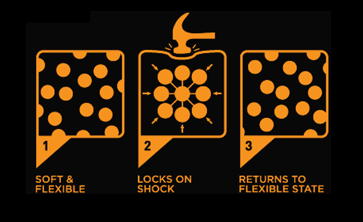http://newsdaily.com/2015/04/liquid-body-armor-tested-in-poland/
In the novel that I am currently trying to find a home for, a group of government entities use what I called Kinetishield (or KBA, for Kinetic Bodyshield Assist). Â The original idea was very much along the lines of what this team is developing, a blended fabric that utilizes different elements (in this case a blend of a non-Newtonian materials with more traditional kevlar style fabrics) to diffuse the kinetic energy of a projectile across a larger surface area (resulting in a truly epic set of bruises, rather than large messy holes).
Kinetishield (as I envisioned it) has an “electronic” component to it that pushes this effect even further, tightening and loosening areas of the weave in response to impact forces, as well as some situational awareness elements (if tied into someone’s wearable computer), but the core science remains the same as what is currently being explored by military scientists in many countries.  It’s the energy focused on point of impact that makes the hole, if you get the same amount of force, over a broader area, you end up with something far more survivable.
Of course, then we get into the effects of hydro-static shock, but that’s a post for another day.





